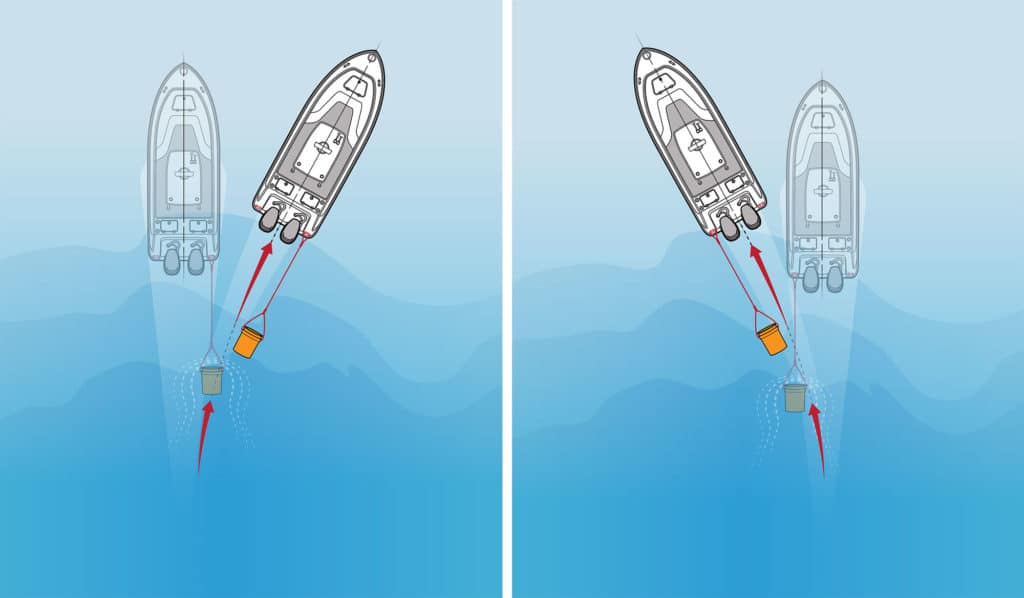
Jean-Jacques Savin crossed the Atlantic Ocean last year, aboard a floating capsule with no steering mechanism or source of propulsion. The intrepid Frenchman relied upon ocean currents to make his crossing.
If the steering system aboard your powerboat fails, you might be able to use wind and current to get home, or at least make a safe landing ashore. Provided your engine is running, you could use a judicious amount of thrust combined with the set (whoop! nautical term alert!) of the wind and current to allow you to vector in a desired direction. Like a duck crossing a stream. Practice this sometimes; at the least, you’ll learn how your boat reacts to external forces.
Of course, if you have two or more engines, you can steer with some degree of reliability by alternate shifting. Want to make a turn starboard? Engage the port engine and leave the starboard-side gear in neutral. For a sharper turn, you can reverse the engine on the same side as the turn, but only at slow speeds. This too should be practiced before your steering fails and you have to do it. Different boats behave differently, and it pays to learn how yours will perform before the gull guano hits the bilge blower.
Those with single-engine boats lack the option of splitting the shifters. But, with forethought, skippers of single-engine craft can devise ways to create drag on alternating sides of the boat that will induce a turn. At a moderate speed, a paddle, or even a landing net, can be held alongside the boat, perhaps braced by the leg of a crewmember straddling the gunwale (and wearing a life jacket). In so doing, the boat will turn to the side on which the drag is applied.
The same principle gets used when you deploy a sea anchor as a drogue to create drag and help steer the boat. A drogue more typically serves to create drag directly astern and, in so doing, inhibits some vessels’ tendency to broach in a following sea. Fishermen also use drogues as a drag to slow down trolling speed, or even the speed of a drifting boat. In all those applications, the drogue—or bucket, or length of line (“streaming a warp”)—gets applied on centerline.
Tip: If your steering fails with your rudder, engine or drive already in a turn, you might be able to make very slow, very wide turns. Or not. Carry tools to free the drive, engine or rudder, even if you can’t repair the steering.
You know why these get deployed on centerline? Because if applied to one side, they will make the boat steer to one side or the other. With your steering system gone, you can turn this defect into an asset, and tow a drag from one stern cleat and then the other. An actual sea anchor might prove easiest to use because these have a trip line that allows you to dump the water in the cone so you can more easily haul it in and move it to the opposite stern cleat as needed.
Two notes: If using a bucket, don’t rely on the metal handle to hold up. It will pull out in short order. Instead, poke holes a few inches below the rim of your bucket and tie a bowline right through both holes. When you want to pull it in, shift to neutral and prepare for a workout.
And practice with your now-modified bucket or sea anchor before you are forced to use either one due to a real failed steering system.









